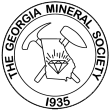Finding The Right Mineralogy Text:
Dana's System of Mineralogy
by
Julian Gray, P.G.
Originally published in "Tips and Trips", Vol. XXVIII, No. 4, Page 7, April 1999

To begin our series on finding your ideal mineralogy reference, we turn to the landmark works of James Dwight and his son, Edward Salisbury Dana, Both Yale geology professors. Although not the first mineralogy references, their publications are remarkable.
In the nineteenth century, the science of mineralogy took a tremendous leap forward when James Dwight Dana (then twenty-four and out of college only four years) devised his System of Mineralogy. In early editions of the System, J.D. Dana attempted to place minerals into a classification scheme similar to that of Lineaus’ genus - species categories used in botany and zoology. It wasn’t until 1854 when J.D. Dana published the 4th edition of the System of Mineralogy that he struck on the chemical classification system (elements, sulfides, oxides, silicates, and so on) that we accept universally today. The first edition was privately published in 1837 and described the mere 352 species know at that time. Current editions list more than 3700 species and approximately 50 more are discovered each year.
The first five editions, published in 1837, 1844, 1850, 1854, and 1868, were authored or revised by James Dwight Dana. The sixth edition was revised by Edward S. Dana and published in 1892. Three appendices (one by W.E. Ford) were published in the American Journal of Science and these brought mineral descriptions of the sixth edition up to date as of 1915. The seventh revised edition was begun in 1927 by Harvard University professors Charles Palache, Harry Berman, and Clifford Frondel, and volume one was published in 1944. The second volume of the seventh edition was published in 1951. Volumes one and two covered all minerals except the silicates. New mineral discoveries, new analytical procedures, and almost constantly changing revisions to silicate classifications out paced Palache, Berman, and Frondel. Clifford Frondel completed the third volume, covering only silica minerals, in 1962.
Dana’s System of Mineralogy is in its eighth edition (actually titled Dana’s New Mineralogy), which has received mixed reviews. The level of detail in the eighth edition was greatly reduced and streamlined from that of the seventh edition. Illustrations are sparse and an efficient abbreviation system allowed the eighth edition to be condensed to a single volume. Although the authors do state when it was begun, they do indicate that the number of new species has doubled over the life of the project. While a new edition is welcomed, it is disturbing to see the number of typos, inconsistencies, and other errors. This is particularly disturbing after the authors state that the sixth edition (by E.S. Dana in 1892) was popular for over 50 years “due to the meticulous care with which it was prepared, [and] the wonderful freedom from errors, . . .” If you seek a book to aid in recognition of minerals, this is not the one for you. Hard core mineralogists must have access to this work because it does offer a complete and detailed listing and description of all mineral species through the end of 1995, including all silicate minerals. Forty-four new minerals found in 1996 are listed, but not described, in an appendix. The current price of $275.00 may place this work out of reach of many collectors. Used book dealers are selling the seventh edition for about $150 and the fourth, fifth, and sixth editions from $300 to $400.
Another feature of Dana’s System of Mineralogy is the Dana number, a four-part number unique to each species. The eighth edition provides new Dana numbers for all the species described and these are different from those of previous editions. So if you have catalogued your mineral collection using Dana numbers from previous editions, you need to decide if you want to update your catalog (and if it is worth the effort.) Dana also lists prominent locations of mineral occurrences. Some collectors specialize in collecting these so-called Dana locations, minerals from locales mentioned in Dana’s System.
Although it was intended that the discussion of the contributions of J.D. and E.S. Dana be finished in a single column, this discussion will be continued in the next issue. Next month, we will also discuss more affordable text. As always, the author appreciates feedback (good and bad). Remember that all will benefit from your contributions.
Sources:
Dana, E.S., 1892. The system of mineralogy, sixth edition with appendices I, II, and III, completing the work to 1915: John Wiley & Sons, New York, 1134 p.
Ford, W.E., 1918. The growth of mineralogy from 1818 to 1918: The American Journal of Science [editor: E.S. Dana], forth series, v. XLVI, p. 240-254.
Gaines, R.V., Skinner, C.W., Foord, E.E., Mason, B, and Rosenzweig, A., with sections by V.T. King, 1997. Dana’s new mineralogy - The system of mineralogy of James Dwight Dana and Edward Salisbury Dana: Eighth edition, entirely rewritten and greatly enlarged, John Wiley & Sons, New York, 1819 p.
Kraus, E.H., 1941. Mineralogy: Geology, 1888-1938 - Fiftieth anniversary volume of the Geological Society of America, p. 309-332.
Newell, Julie, R., 1997. James Dwight Dana and the emergence of professional geology in the United States: The American Journal of Science, v. 297, no. 3, [A special issue of the AJS in honor of J.D. Dana], p.273-282.
Palache, C. Berman, H., and Frondel, C., 1944 (v. I), 1951 (v. II), and 1962 (v. III). The system of mineralogy, seventh edition: John Wiley & Sons, New York.
PART 2
Among the many general geology texts, J. D. Dana also published the Manual of Mineralogy (now in its 21st edition by Klein and Hurlbut). This work covers the history of mineralogy, physical and chemical properties of minerals, crystallography, descriptions of about 200 mineral species, the occurrence of ore deposits, and a brief discussion of rock identification. Because of the broad coverage of so many areas of mineralogy and the depth of the coverage, the Manual of Mineralogy after J. D. Dana is the personal favorite of most geologists. This is a standard reference in introductory mineralogy courses in most universities. Strangely, most students not only feel that this is the best generally descriptive mineralogy text, they generally prefer the edition that they used in their respective course (This also allows one to determine the vintage of the geologist.) Because this book focuses only on the 200 or so common ore minerals or rock-forming minerals, many species familiar to mineral collectors are absent from the Manual of Mineralogy. For example, you will not find two relatively common phosphate minerals, kidwellite and strengite. Nevertheless, this work remains a classic text for its intended purpose.
E.S. Dana wrote the definitive book on determinative mineralogy. Late Yale professor and mineralogy curator William E. Ford updated this book, A Textbook of Mineralogy, as the 4th edition that was published in 1949. This book contains an exhaustive (204 pages) treatment of crystallography (for those well versed in trigonometry and analytical geometry.) There are also excellent sections on physical and chemical testing, including blowpipe analysis of an unknown mineral. An extremely useful feature of the Textbook of Mineralogy is an index of minerals by the principal chemical component. If, for example, you know that your unknown has copper and is probably a carbonate, you can quickly narrow your focus to four mineral choices using this index. By reading the descriptions within the book, you can then rapidly identify the mineral. Included in the species descriptions are ways that one can distinguish similar species, exemplary crystal drawings, principal identifying properties, and a large list of occurrences (as of 1949). Nowhere does the author state the number of species described, but it is an exhaustive list and the descriptions are great. The determinative mineralogy sections and the chemical index of mineral species make this work invaluable. Despite the age of the most recent edition, 50 years, only the information regarding mineral formation and a few other minor details are dated.
Last year, the 4th ed. of Dana’s Minerals and How to Study Them (after E.S. Dana), revised by Cornelius Hurlbut and W.E. Sharp, was published. This reference contains much the same information regarding determinative mineralogy as the Textbook, but in less scholarly prose (no trigonometry either.) As with the Manual of Mineralogy, Minerals and how to Study Them only describes 150 more common species, less than some of the field guides. Dana’s Minerals and How to Study Them is up-to-date, contains photographs as well as drawings, contains determinative property tables, and has several useful appendices. These appendices include a list of mineral species arranged according to principal chemical constituent (as with the Textbook) and a list of the most important minerals for a small collection.
Enough about Dana already. In the next Part of this series, we will cover features of other descriptive mineralogy textbooks, then on to the field guides. Please remember, your input in this series would be much appreciated.
References:
Ford, W.E., 1949. A Textbook of Mineralogy with an Extended Treatise on Crystallography and Mineralogy by Edward Salisbury Dana: John Wiley & Sons, Inc., New York, 851 p. (Out of print. Used book dealers sell this for $30 to $50)
Hurlbut, C.S., and W. Edwin Sharp, 1998. Dana’s Minerals and How to Study Them, 4th edition: John Wiley & Sons, Inc., New York, 328 p. (currently $39.95)
Klein, C., and Hurlbut, C. S., 1993. Manual of Mineralogy (after J.D. Dana) 21st edition. John Wiley & Sons, Inc., New York, 681 p. (Currently $89.95)

Copyright © Georgia Mineral Society, Inc.
